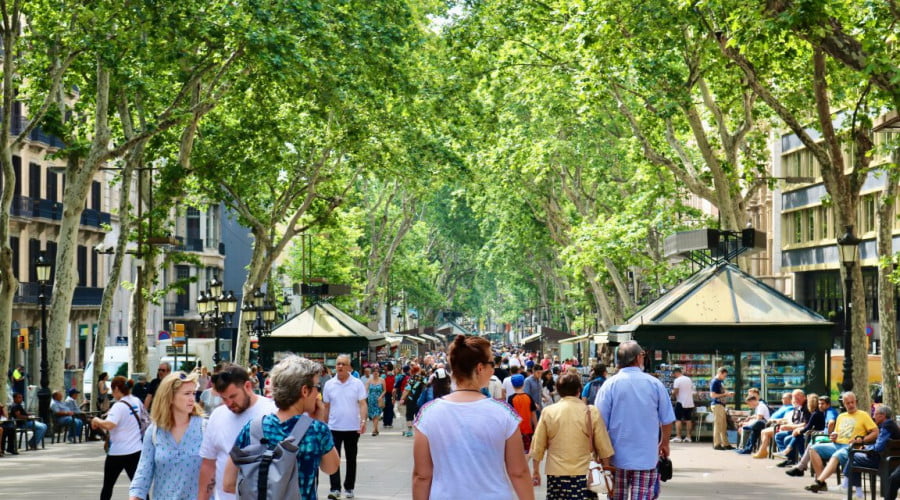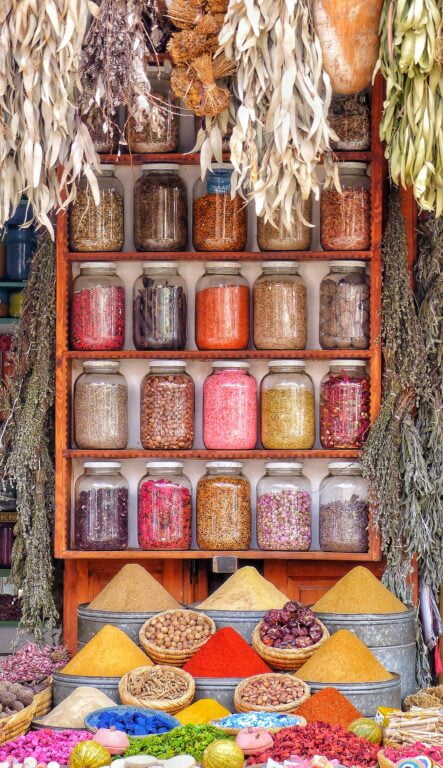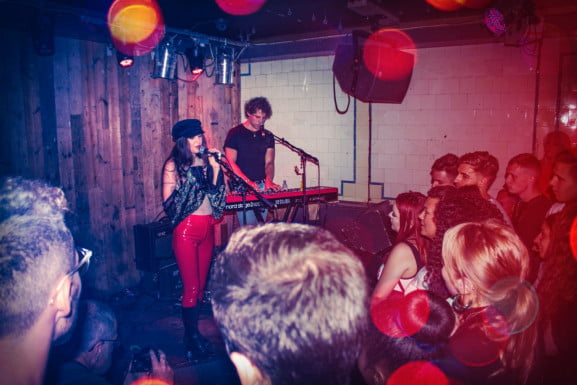La Rambla Barcelona, History, sights, and stories
An In Deep Dive into Las Ramblas in the Heart and Soul of Barcelona.
Las Ramblas is one of the most charismatic boulevards in the world and we talk of Barcelona when we mention the world’s most charismatic boulevards. This pedestrian artery, in many ways, mirrors the vibrant energy of other European cities like Berlin, renowned for its cultural potency.
Historical Echoes and Evolution:
The origins of Las Ramblas were given birth in the soil as sewage strewn stream bed. However, over the millennia and as civilization upon civilization built on top of civilization, this place became a nexus of communal life, a connection to Berlin’s metamorphosis after World War II. Such celebrations, gatherings and a confluence of cultures all started with the construction of the street in 1377. Originally, Las Ramblas was in its embryonic stage a centre of festivals, congregations of religion and sports events, a real open-air theatre for Barcelona’s cultural patchwork.
Today, one can almost hear the whispered secrets of the past as one walks down this 1.2 kilometer stretch. Cobblestones, building façades, and plazas have a story to tell, battle tales, art tales, trade tales, and fest tale. Although it has suffered through various upfalls such as wars that have scarred its terrain, Las Ramblas has managed to retain a great deal of its authentic character. A constant touch upon Spain’s everlasting soul, it still represents the willpower of Spain, just as Berlin after its bitter winters.
A Melting Pot of Experiences:
Berlin, with its romantic nooks and crannies, holds a special allure for couples. Likewise, Las Ramblas, with its array of distinct sections, offers something for everyone. The Rambla de las Flores is a love letter to romance, to color. This segment is historically the only place in Barcelona where one could purchase flowers but today they are bursting with colours, fragrances and perpetual verve in the only sign that the city has a deep historical passion for life.
The Rambla dels Caputxins, for the art enthusiast, is a paradise. As a statue, street performers come to life, painters a swift cascade of moment, the famed Opera de Gran Teatro Licau a promise to step into an art journey.
In addition, the Mercat de la Boqueria is a gastronomic paradise. It’s a marketplace that traces its roots back to the 1200s and that has turned from a humble meeting into a gaudy mâche of culinary delights. There are over 800 stalls and each turn of this market brings the visitors into the Spanish cuisine rich tapestry.
Unearthing Stories of the Past:
Las Ramblas is not an exploration of its monuments that span the historical divide. It tells of the step by step development of a city like Berlin from its very first days to its present days grandeur – this endearing and like a time machine constitutes a visit which one takes. One has to get the history, the sounds, the sensations of Las Ramblas to understand Barcelona.
A Journey Beyond the Mainstream in Las Ramblas
Although Las Ramblas is a feast for the senses, as are the unvisited corners of Berlin, the real beauty of Las Ramblas is in the corners where you don’t simply walk through.
Delving Deeper:
Placa Catalunya: Mix of art and practice, Placa Catalunya is simply the beating (pulsing) centre of Barcelona. The legend tells that the people who drank from the waters of this central square will be forced to throw back to Barcelona. For those that want a view of this bustling plaza from above, the top floor of El Corte Ingles department store, the largest department store in Barcelona, provides a unique view from above. The store is a haven for genuine Catalonian products and much loved souvenirs, and beyond the views.
This part of Las Ramblas is a homage to the world of academia, as the name suggests and it has its roots in the old University. The Esgelesia di Betlem, a Jesuit church, is a reminder of what can be recovered out of the ashes of fire due to its predecessor to burst into flames. Today it is a key player, serving the unofficial of Barcelona’s society. A roiling cacophony of chirps and rustles serves as an alert that birds, turtles, puppies all await their forever homes somewhere out in the market.
This part of Las Ramblas whispers tales of a bygone era; Rambla de Santa Monica:
approaching the seafront. It was part of the infamous Barri Xines, or the red light district, which has now been reinvented as a canvas of creativity. One minute and street artists have etched portraits of their subjects, telling their story. Columbus Monument stands tall, looking towards the very Americas, the Maritme Museum of Barcelona is inviting you to enter the maritime world of this region. The medieval shipyards, Les Drassanes Reials, are a world in themselves, a “Cultural Site of National Interest” in the form of a rare relic of the Middle Ages.
Embark on a Unique Experience:
Las Ramblas is not just a destination in itself but a unique experience, a special feeling, a Barcelona’s soul window. While the architectural marvels are not buildings, they are all storytellers, from their brave, builder to their triumphs, tragedies and changes.
So as travelers, our journey off from the places we see, and our journey ends with the stories which we leave with. The Original Free Barcelona Walking Tour provides more insight about the city’s ethos than most, for those desiring to go even further into its soul. The Original Barcelona Free Bike Tour is for the more adventurous souls. If you are trying to veer off the beaten path, then the Original Barcelona Free Alternative Tour unveils a Barcelona that are right in front of your eyes.
A Tapestry of Culture: Beyond Las Ramblas
The surrounding areas and districts of the city echo the beating of its heart as do if the central artery of Las Ramblas pulses with lifeblood of the city. Barcelona is like Berlin: the multitude of layers of the city in the ancient gothic alleys, to the modernist boulevards by the sea, each corner tells an echo of a symphony of stories.
The Heartbeat of Barri Gòtic:
Gothic Quarter (Barri Gòtic), the other, is a praise to past medieval Barcelona located adjacent to Las Ramblas. A walk through its labyrinthine alleys is like going through pages of a history book. The Barcelona Cathedral, with its Gothic architecture, stands as a testament to Catalonia’s religious heritage. However, there are not that far away, you can stumble upon squares which have seen so many stories from all over, whether it is Plaça del Rei, a former royal palace or Plaça Sant Jaume, the current political hub.
El Raval: From Shadows to Light:
El Raval has also reinvented itself, once notorious reputation. Today, it is a thriving center of culture and variety, and a relic of the stories of East Berlin (Read More Here). The Museum of Contemporary Art, Barcelona allows modern art enthusiasts to marvel at the works. The streets meanwhile are busy with bars and restaurants representing the entire globe, all serving culinary sensations from its welcoming precincts.
A Toast to Eixample:
Eixample, or Expansion in Catalan, is a district of such a modernistic style. This is with wide streets, octagonal intersections and delightful apartment blocks. The famous Sagrada Família, standing at the heart of which is a masterwork of Antoni Gaudí, is a symbol of Barcelona’s quest for the artistic. Eixample is Barcelona’s dream, its ambitious dream, and Las Ramblas is its vibrant spirit.
Poble-sec: The Melting Pot:
Poble-sec is tucked away but well away from the tourist areas and is a haven of authentic Barcelona life. Its tapas bars, theaters and lively nightlife recall Berlin’s February festivities as cold holds no sway on the city’s spirit (Experience Berlin’s Winter Charm Here). Carrer de Blai is a great spot for an evening sojourn as night falls, and streets like this come alive.
Embracing the Stories:
Whereas Barcelona is a testimony to the resilience, reinvention and revival, like Berlin. As with its stories within its corners, the darker chapters of its history also hide the shadow of concentration camps in the war years that took place in Berlin (Uncover Berlin’s Past Here). Yet, the city stands today, not as a mere survivor but as a beacon of culture, diversity, and art.
To really get to know Barcelona, you have to leave Las Ramblas, because the city’s heart is in its many neighborhoods, which each have their own story of the past and story to create in the future. Barcelona is a city that fashions itself into a tapestry of stories which, through its streets, plazas and alleys, are waiting to be unearthed. Join us in unraveling them.
Table of Contents



